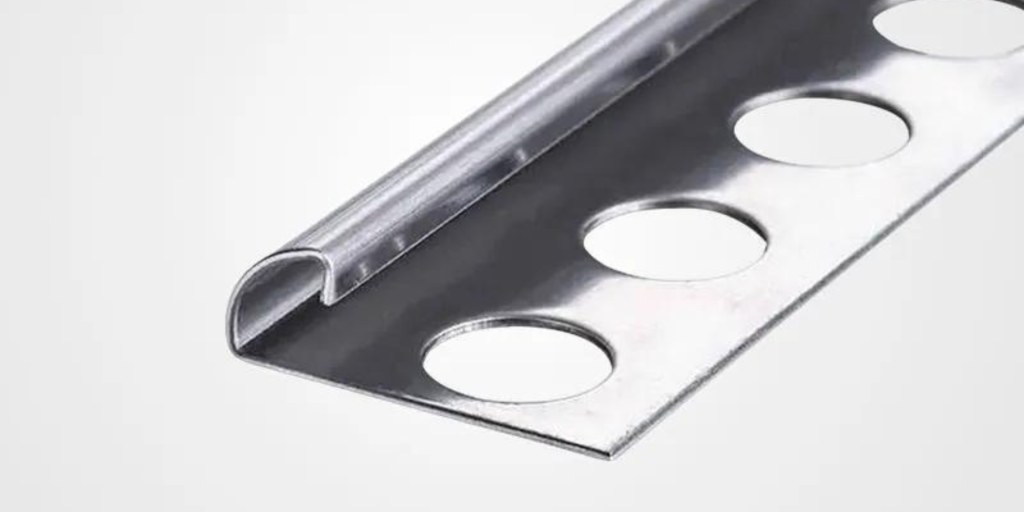
Tile trim plays an essential role in both residential and commercial tiling projects. It ensures a clean and professional finish, protects edges from damage, and adds an aesthetic element to tiled surfaces. Among the various materials available for tile trim, stainless steel stands out as a popular choice due to its durability, modern look, and low maintenance. This article explores the benefits of stainless steel tile trim, its applications, and why it’s an excellent choice for any tiling project.
What is Tile Trim?
Tile trim is a protective and decorative edge that finishes off tile installations, particularly at exposed edges, corners, or transitions between different surfaces. By using tile trim, you can prevent tiles from chipping or cracking while also creating a polished and seamless look. Tile trim also ensures that transitions between different materials, like tile to wood or tile to carpet, are smooth and visually appealing.
Benefits of Stainless Steel Tile Trim
Durability
- Stainless steel is one of the most durable materials available for tile trim. It is highly resistant to wear, impact, and corrosion, making it ideal for areas with heavy traffic or exposure to moisture and chemicals. Unlike plastic or aluminum, stainless steel can withstand long-term use without losing its strength or appearance.
Corrosion Resistance
- Stainless steel is known for its excellent corrosion resistance, especially in environments that are prone to moisture, like bathrooms, kitchens, and outdoor spaces. This makes stainless steel tile trim perfect for areas where other materials might rust or degrade over time.
Modern Aesthetic Appeal
- The sleek, polished finish of stainless steel tile trim adds a contemporary and elegant touch to tiled surfaces. It complements modern design trends and enhances the overall look of bathrooms, kitchens, commercial spaces, and more. The reflective quality of stainless steel can also help create a sense of depth and brightness in a room.
Low Maintenance
- Stainless steel tile trim requires very little maintenance. It is easy to clean with just soap and water, and it doesn’t require sealing or painting to maintain its appearance. This makes it a practical choice for both residential and commercial spaces where longevity and low upkeep are important.
Versatility
- Stainless steel tile trim is available in a variety of shapes, sizes, and finishes, allowing it to be used for different tile types and applications. Whether you’re working with ceramic, porcelain, or natural stone tiles, stainless steel trim can be used to create a neat, professional finish for any project.
Safety
- By covering sharp or exposed tile edges, stainless steel tile trim reduces the risk of injury. It provides a smooth, rounded edge that protects both the tiles and the people using the space.
Common Applications of Stainless Steel Tile Trim
Bathrooms
- In wet areas such as showers, around bathtubs, and along sink backsplashes, stainless steel tile trim is a popular choice due to its corrosion resistance. It helps protect tile edges from water damage and gives a clean, modern finish to the space.
Kitchens
- Stainless steel tile trim is frequently used in kitchens to finish edges around countertops, backsplashes, and islands. Its sleek appearance complements stainless steel appliances, giving the kitchen a cohesive, polished look.
Commercial Spaces
- In commercial settings like restaurants, hotels, and offices, stainless steel tile trim is often used because of its durability and ability to withstand high traffic. It provides a professional finish that enhances the aesthetic appeal of the space.
Outdoor Areas
- Stainless steel tile trim is an excellent choice for outdoor spaces such as patios, pool areas, and exterior walls. Its corrosion resistance allows it to withstand the elements, ensuring that the trim maintains its integrity and appearance over time.
Staircases and Transitions
- When tiling staircases, stainless steel trim provides both protection and a visual highlight. It can also be used to create smooth transitions between different materials, such as where tile meets wood, carpet, or laminate flooring.
Feature Walls
- For accent walls or decorative tile installations, stainless steel tile trim can add a sleek, polished edge that frames the design and draws attention to the tile pattern.
Types of Stainless Steel Tile Trim
Straight Edge Trim
- This is the most common type of tile trim, used to finish off the exposed edges of tiled walls or floors. It provides a neat and seamless transition between the tile and the surrounding surface.
Round Edge (Bullnose) Trim
- Bullnose trim features a rounded edge that gives a softer, more curved finish to tile installations. It’s perfect for use on corners, steps, or areas where a smoother edge is desired.
Corner Pieces
- Stainless steel corner trim is specifically designed for external corners where two tiles meet at a 90-degree angle. It provides extra protection to the corner and ensures a sharp, clean look.
Transition Trim
- This type of trim is used to create a smooth transition between different flooring types, such as between tile and wood or carpet. Stainless steel transition trim ensures that the change in materials is safe and visually cohesive.
How to Choose the Right Stainless Steel Tile Trim for Your Project
Tile Thickness
- When selecting stainless steel tile trim, ensure that the trim matches the thickness of your tiles. Trim that is too thin or too thick may not provide the best protection or appearance.
Finish and Style
- Stainless steel tile trim comes in different finishes, including brushed, polished, and satin. Choose a finish that complements the overall design of the space and other fixtures, such as stainless steel appliances, faucets, or cabinet hardware.
Application
- Consider the specific application for the trim. For high-traffic areas or exterior applications, choose heavy-duty stainless steel trim that can withstand wear and tear. For decorative installations, opt for a trim style that enhances the overall aesthetic of the space.
Ease of Installation
- Most stainless steel tile trims are easy to install using standard adhesives or grout. However, be sure to follow the manufacturer’s installation instructions to ensure a secure and professional finish.
Stainless steel tile trim is a versatile, durable, and visually appealing option for finishing tile installations in residential and commercial spaces. Its corrosion resistance, strength, and modern look make it the ideal choice for areas exposed to moisture, heavy traffic, or where a polished, sleek aesthetic is desired. Whether used in bathrooms, kitchens, outdoor areas, or commercial buildings, stainless steel tile trim provides the perfect finishing touch to any tiling project, ensuring a professional and long-lasting result.

